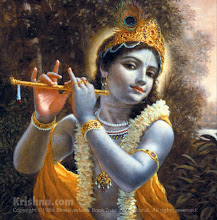Ashta Vinayak Darshan-Siddhivinayak,Siddhatek
 Our Ashtavinayak Tour from Mumbai has the final Ganapathi at Siddhatek, a remote village along the banks of river Bhima, in the Karjat Taluka of Ahamednagar District of Maharashtra. This Siddhivinayak is considered a powerful diety. It is believed that it was here in this Siddhatek mountain that Lord Vishnu acquired Siddhi. Lord Vishnu is supposed to have vanquished the asuras Madhu and Kaidabh after propitiating Lord Ganesha here. This is the only Idol of the Ashtavinayaks which has the trunk turned to the right. It is believed that two saints Shri Morya Gosavi and Shri Narayan Maharaj of Kedegaon attained enlightenment here. The temple is north-facing on a small hillock. The main road towards the temple was built by the Peshwas. The inner santorum , 15 feet high and 10 feet wide, was built by Punyashloka Ahilyabai Holker. The idol is 3 feet tall 2.5 feet wide and is north-facing. The Idol's stomach is not wide but the statues of Riddhi and Siddhi are sitting on the thigh. The trunk is turned to the right side. The right-sided-trunk Ganeshas are believed to be very strict with Their devotees. To make one Pradakshina of the temple one has to make round trip of the hillock which takes about 30 mnts. with moderate speeds.
Our Ashtavinayak Tour from Mumbai has the final Ganapathi at Siddhatek, a remote village along the banks of river Bhima, in the Karjat Taluka of Ahamednagar District of Maharashtra. This Siddhivinayak is considered a powerful diety. It is believed that it was here in this Siddhatek mountain that Lord Vishnu acquired Siddhi. Lord Vishnu is supposed to have vanquished the asuras Madhu and Kaidabh after propitiating Lord Ganesha here. This is the only Idol of the Ashtavinayaks which has the trunk turned to the right. It is believed that two saints Shri Morya Gosavi and Shri Narayan Maharaj of Kedegaon attained enlightenment here. The temple is north-facing on a small hillock. The main road towards the temple was built by the Peshwas. The inner santorum , 15 feet high and 10 feet wide, was built by Punyashloka Ahilyabai Holker. The idol is 3 feet tall 2.5 feet wide and is north-facing. The Idol's stomach is not wide but the statues of Riddhi and Siddhi are sitting on the thigh. The trunk is turned to the right side. The right-sided-trunk Ganeshas are believed to be very strict with Their devotees. To make one Pradakshina of the temple one has to make round trip of the hillock which takes about 30 mnts. with moderate speeds.The legend has it that the Peshwa general Haripant Phadake lost his general post and took 21 Parikramas of Siddhivinayak temple. On 21 st day the Peshwa court-man came and took him away to the coutroom with royal honour. Haripant promised the God that he will bring the stones of the castle which he will win from the first war he will fight as the general. The stone pathway is built from the Badami-castle stones which was attacked by Haripant soon after he became the general. This temple is situated off the Pune-Solapur highway about 48 Kms. from the town of Srigonda in Ahamednagar district, on the banks of Bhima river. The nearest railway station is Daund, about 18 Kms. away.From Morgaon Moreshwar to Siddhivinayak at Siddhatek is about 90 Kms. and it's about 33 Kms. off the main Solapur road. Siddhatek used to have access problem before but now a bridge has come up on the river leading to the temple and therefore it is better accessible now. Ganesh Chathurthi is celebrated with great spendor here.
For a riligious Ashtavinayak tour according to Shastra, one has to start from Pune and visit these Ganapathies as per the following order, Shri Mayureshwar, Shri Siddhivinayak, Shri Ballaleshwar, Shri Varadavinayak, Shri Chintamani, Shri Girijatmaj, Shri Vignahar and Shri Mahaganapathi. (Please confirm the order from other sources). But to drive from Mumbai we have found the order in which these 8 posts have been made, more convenient. But to visit these Ganapathies at least once in ones life time is believed to be Mokshadayak and ofcourse Sakala Abheeshta Phala Dayak as well.





















